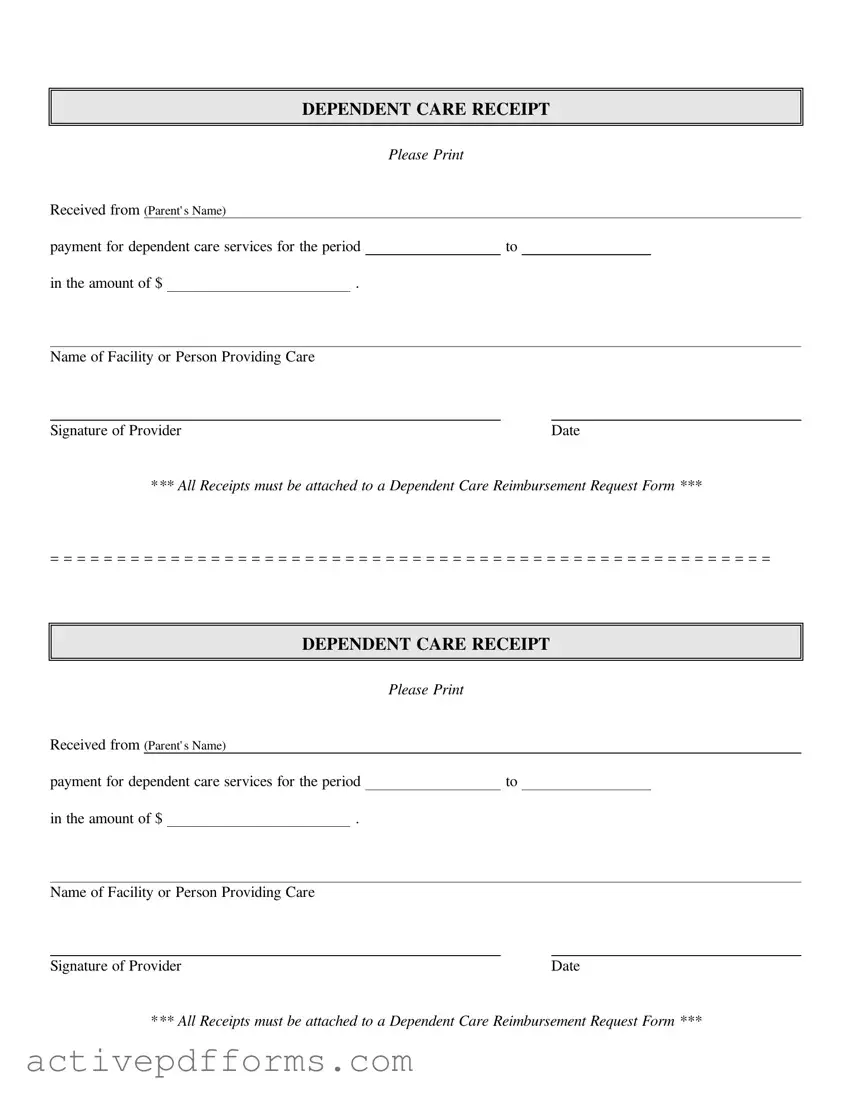Free Dependent Care Receipt PDF Template
The Dependent Care Receipt form plays a critical role for individuals seeking reimbursement for child or dependent care expenses. It serves as a documented confirmation that payment has been made for dependent care services, outlining the service period, the amount paid, and the provider's details. To ensure a smooth reimbursement process, it's crucial that this receipt is accompanied by a Dependent Care Reimbursement Request Form.
Edit Dependent Care Receipt Now

